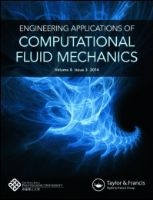
Engineering Applications of Computational Fluid Mechanics
Scope & Guideline
Pioneering Solutions in Fluid Mechanics Applications
Introduction
Aims and Scopes
- Computational Fluid Dynamics (CFD) Applications:
The journal emphasizes the application of CFD in solving real-world fluid mechanics problems, including simulations related to aerodynamics, hydrodynamics, and thermal management. - Machine Learning Integration:
There is a growing focus on integrating machine learning techniques with traditional fluid mechanics simulations to enhance predictive capabilities and optimize designs. - Multiphase Flow Dynamics:
Research on multiphase flow interactions, including liquid, gas, and solid interactions, is a core area, addressing challenges in various industries such as energy, environmental engineering, and biomedical applications. - Hydrodynamic Optimization:
The journal features studies on optimizing fluid flow systems, including pumps, turbines, and heat exchangers, using computational methods to improve efficiency and performance. - Environmental Fluid Mechanics:
Research related to environmental applications, such as flood simulations, pollutant dispersion, and renewable energy systems, is also a significant focus, highlighting the societal relevance of fluid mechanics. - Bio-inspired Fluid Dynamics:
The journal promotes studies inspired by biological systems, focusing on innovative designs and efficient mechanisms that mimic natural processes in fluid dynamics.
Trending and Emerging
- Artificial Intelligence and Deep Learning:
There is a significant rise in studies utilizing AI and deep learning methodologies to enhance fluid dynamics simulations, optimize designs, and predict complex flow behaviors, showcasing a trend towards data-driven approaches. - Sustainable and Green Technologies:
Research focusing on sustainable applications, including renewable energy systems and environmentally friendly fluid management, is increasingly prominent, reflecting global priorities on sustainability. - Advanced Materials and Nanofluids:
The investigation of nanofluids and other advanced materials in fluid mechanics is gaining traction, indicating a trend towards exploring new materials that enhance thermal and flow characteristics. - Interdisciplinary Approaches:
The journal is increasingly publishing papers that integrate fluid mechanics with other engineering disciplines, such as biomedical engineering and environmental science, highlighting the trend towards interdisciplinary research. - Real-Time Simulation and Digital Twin Technologies:
Emerging interest in real-time simulations and digital twin technologies is evident, as researchers seek to create dynamic models that can adapt and provide insights during operational scenarios.
Declining or Waning
- Traditional Analytical Methods:
There has been a noticeable decline in the publication of papers relying solely on traditional analytical methods for fluid dynamics problems, as more researchers adopt computational techniques for more complex scenarios. - Basic Experimental Fluid Mechanics:
Studies focused on fundamental experimental fluid mechanics without computational backing are less frequent, possibly due to the increasing capabilities and accessibility of CFD tools that can simulate complex phenomena. - Narrowly Focused Case Studies:
There is a waning interest in highly specific case studies that do not incorporate broader applications or implications, as the journal encourages more integrated and versatile research that can contribute to multiple fields.
Similar Journals
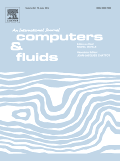
COMPUTERS & FLUIDS
Exploring Innovative Solutions in Computer Science and EngineeringCOMPUTERS & FLUIDS, published by PERGAMON-ELSEVIER SCIENCE LTD, is a premier journal in the fields of Computer Science and Engineering, with a distinguished history dating back to 1973. Its Q1 ranking in both Computer Science (Miscellaneous) and Engineering (Miscellaneous) illustrates its high impact and relevance, being positioned among the top tier of scientific publications. With a robust focus on the intersection of computational methods and fluid dynamics, this journal serves as a vital platform for researchers, professionals, and students dedicated to advancing knowledge and technology within these domains. Although it is not an open-access journal, its articles are accessible through various academic institutions and libraries, ensuring that vital research reaches its intended audience. Readers can explore innovative methodologies and applications, reinforcing the journal's commitment to enhancing the understanding of fluid mechanics through cutting-edge computational approaches. For more details, visit the official website of COMPUTERS & FLUIDS to stay abreast of the latest research advancements.
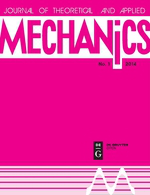
Journal of Theoretical and Applied Mechanics-Bulgaria
Bridging Theory and Application in MechanicsThe Journal of Theoretical and Applied Mechanics-Bulgaria, with the ISSN 0861-6663 and E-ISSN 1314-8710, is a pivotal publication in the field of mechanics, published by the esteemed BULGARIAN ACAD SCIENCES, INST MECHANICS. Based in Germany, this journal serves as a forum for researchers and practitioners to disseminate groundbreaking theories and applications in Computational Mechanics, Mechanical Engineering, and Modeling and Simulation. As of 2023, it is classified in the Q4 quartile for these categories, reflecting its emergence in the academic landscape, though it has room for growth in visibility and impact. The journal encompasses an ambitious scope aimed at fostering innovation and collaboration among academics, making it an invaluable resource for students and professionals seeking to stay abreast of emerging trends and methodologies in mechanics. Despite its current rank and percentile indicators in Scopus, the journal is committed to enhancing its reach and impact within the community through future editions converging from 2016 to 2024. With no open access options currently available, it emphasizes the importance of institutional subscriptions and academic partnerships to maintain its quality publication standards.

Journal of the Serbian Society for Computational Mechanics
Empowering Insights in Computational MethodologiesJournal of the Serbian Society for Computational Mechanics, published by the Serbian Society for Computational Mechanics, is a vital platform for advancing research and knowledge in the field of computational mechanics. Established in 2012, this journal serves the academic community by providing a forum for innovative studies, methodologies, and applications within computational mechanics, presenting valuable insights for researchers, professionals, and students alike. With an ISSN of 1820-6530 and a ranking of Q4 in Computational Mechanics, it carries an essential influence in the engineering realm, despite its current rank of 71 out of 89. The journal's commitment to scholarly excellence aims to foster collaboration and encourage interdisciplinary research, making it an important resource for those invested in the evolving landscape of computational methodologies. Although the journal currently does not offer Open Access options, it remains dedicated to disseminating knowledge that will resonate within the local and global scientific community.
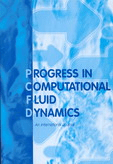
PROGRESS IN COMPUTATIONAL FLUID DYNAMICS
Pioneering Insights into Computational Fluid DynamicsPROGRESS IN COMPUTATIONAL FLUID DYNAMICS, published by InderScience Enterprises Ltd, is a vital journal in the realms of Computer Science Applications and Condensed Matter Physics. Established in 2001, this journal serves as a platform for disseminating innovative research findings and technological advancements in computational fluid dynamics, targeting both theoretical and applied aspects. With a current impact factor positioning it in the Q4 quartile for its fields, it captures a wide array of topics including numerical methods, simulation techniques, and real-world fluid dynamics applications, fostering dialogue among researchers, practitioners, and educators alike. Although it does not provide Open Access options, it remains an important resource for those investigating fluid dynamics phenomena. As it continues to evolve through 2024, PROGRESS IN COMPUTATIONAL FLUID DYNAMICS is positioned to contribute significantly to the scientific community, addressing core challenges while promoting collaboration and knowledge exchange.

Experimental and Computational Multiphase Flow
Exploring the Dynamics of Multiphase FlowExperimental and Computational Multiphase Flow, published by SpringerNature, is a prestigious academic journal that critically examines advancements in the field of fluid dynamics, with a specialized focus on multiphase flow phenomena. Since its inception in 2019, the journal has established a remarkable reputation, attaining Q1 status in Fluid Flow and Transfer Processes as well as Mechanical Engineering according to the 2023 category quartiles, reflecting its high impact and relevance in these domains. With Scopus rankings placing it among the top 15 journals in both Chemical Engineering and Nuclear Energy and Engineering, Experimental and Computational Multiphase Flow is an essential resource for researchers, professionals, and students engaged in cutting-edge studies and applications. Although it operates on a subscription model, the journal remains dedicated to disseminating high-quality research and fostering a deeper understanding of complex fluid interactions across various scientific disciplines. By prioritizing innovative methodologies and interdisciplinary collaborations, the journal aims to significantly contribute to the ongoing evolution of multiphase flow research, recognizing its critical importance in engineering and energy sectors.

ACTA MECHANICA SINICA
Pioneering Insights in Computational MechanicsACTA MECHANICA SINICA is a prestigious journal published by SPRINGER HEIDELBERG that has been a cornerstone in the field of mechanical engineering and computational mechanics since its inception in 1985. Based in Germany, this leading publication is internationally recognized for its high impact, holding a Q1 ranking in both Computational Mechanics and Mechanical Engineering as of 2023. It is positioned prominently within the academic community, evidenced by its respectable Scopus rankings—#21 in Computational Mechanics and #159 in Mechanical Engineering, both within the 76th percentile. Researchers and professionals alike turn to ACTA MECHANICA SINICA for cutting-edge research, innovative methodologies, and insights that drive advancements in the discipline. Although the journal is not open access, its rigorous peer-review process ensures the publication of high-quality, impactful research that is essential for scholars and practitioners aiming to stay at the forefront of mechanical engineering advancements.

Fluid Dynamics
Elevating knowledge in the realm of fluid flow.Fluid Dynamics is a distinguished journal that has been at the forefront of research in the field of fluid flow and transfer processes since its inception in 1966. Published by MAIK NAUKA/INTERPERIODICA/SPRINGER, this journal serves as a valuable platform for engineers, scientists, and researchers dedicated to advancing the understanding of mechanical and fluid dynamic phenomena. With a Q3 ranking in key categories such as Fluid Flow and Transfer Processes, Mechanical Engineering, and Physics and Astronomy, Fluid Dynamics holds a significant position in the academic community, attracting submissions that push the boundaries of knowledge and application. Although it does not currently offer open access options, the journal is recognized for its robust editorial standards and impactful contributions to the field, making it essential reading for anyone involved in fluid dynamics research. Given its consistent publication through to 2024, Fluid Dynamics continues to inspire innovation and collaboration in an ever-evolving scientific landscape.
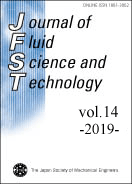
Journal of Fluid Science and Technology
Unlocking the Secrets of Fluid FlowThe Journal of Fluid Science and Technology, published by the Japan Society of Mechanical Engineers, serves as a pivotal platform for the dissemination of cutting-edge research in the fields of fluid mechanics and mechanical engineering. With an ISSN of 1880-5558, this Open Access journal has been dedicated to advancing the understanding of fluid flow and transfer processes since its establishment. As of 2023, it holds a significant position with a Q3 quartile ranking in both Fluid Flow and Transfer Processes and Mechanical Engineering categories. Researchers and practitioners are encouraged to explore the journal’s extensive collection of articles, contributing to the body of knowledge that impacts various practical applications in engineering and technology. The journal, which has established a reputation for quality amidst a competitive landscape, further fosters international collaboration and education by providing unrestricted access to its content. For professionals and students alike, the Journal of Fluid Science and Technology represents an invaluable resource for the latest findings and innovations in fluid dynamics and mechanical systems.

MECCANICA
Exploring the Frontiers of Condensed Matter and MechanicsMECCANICA, an esteemed journal published by Springer, stands at the forefront of research in the fields of Condensed Matter Physics, Mechanical Engineering, and Mechanics of Materials. Established in 1966 and continuing through 2024, this journal provides a robust platform for the dissemination of innovative research and advancements in these increasingly interconnected domains. With an impressive 2023 ranking placing it in the Q2 category across multiple fields, MECCANICA boasts a Scopus rank of #198 in Mechanical Engineering, #150 in Condensed Matter Physics, and #141 in Mechanics of Materials, highlighting its significance and influence within the scholarly community. The journal aims to foster dialogue among researchers, professionals, and students, facilitating the exchange of cutting-edge ideas and methodologies crucial for overcoming contemporary engineering and physics challenges. Readers can access a wealth of knowledge through its comprehensive articles, and while it does not currently offer open access, the journal remains instrumental in shaping the future of engineering and physical sciences.
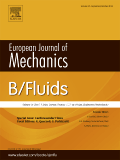
EUROPEAN JOURNAL OF MECHANICS B-FLUIDS
Unveiling the Mysteries of Fluid BehaviorThe EUROPEAN JOURNAL OF MECHANICS B-FLUIDS, published by Elsevier, is a prominent journal in the field of fluid mechanics, addressing the theoretical and experimental aspects of fluid behavior. Since its inception in 1990, this journal has consistently fostered a robust academic dialogue, maintaining a significant impact evidenced by its Q2 ranking in both Mathematical Physics and Physics and Astronomy categories as of 2023, placing it among the top publications in these disciplines. Researchers and professionals focusing on fluid dynamics will find a wealth of knowledge in its articles, which span broad topics pertinent to real-world applications as well as fundamental theories. While the journal is not open access, it offers critical insights that shape ongoing studies in fluid mechanics, making it an invaluable resource for anyone looking to deepen their understanding of the field. Located in the innovative environment of Amsterdam, Netherlands, the journal serves as a nexus for cutting-edge research and collaboration globally.